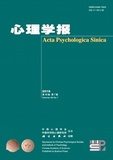Piaget's works covered philosophy, psychology, biology, and logic, as well as other fields. The psychological community attaches great importance to Piaget's influence in the field. For example, he was the President of the Swiss Psychological Society, the President of the French National Psychological Federation, the President of the 14th International Union for Psychological Science, and was awarded the Outstanding Scientific Contribution Award by the American Psychological Association (APA) in 1969.
Should Piaget's academic identity be that of a philosopher or a psychologist? This question is essentially about Piaget's methodology, as it is not the object of the study that defines which branch an approach belongs to, but the method of study it adopts. Piaget's theories are rich and complex, and his works are numerous. What connects such theories into a whole system is the constructional method of Piaget's epistemology.
This article focuses on Piaget's works in the fields of philosophical epistemology, biological analogy methodology, as well as methodology of structuralism and dialectics, so as to analyze the key concepts in the construction process of Piaget's Genetic Epistemology. It was hoped that through such reviews, we can learn from the core constructs of Piaget's theoretical system, which are often misunderstood and ignored. It is also hoped that, by analyzing these contents, Piaget's theory can be explained as being neither psychological in the traditional sense nor philosophical epistemology in the general sense. Rather, we should think of Piaget's Genetic Epistemology as an innovative science of the mind. From this perspective, we can better understand how the Genetic Epistemology can deal with many “difficult problems” faced by contemporary cognitive science.
Piaget defined his core concepts by the theory of equilibrium-construction. He demonstrated the bidirectional interaction between organisms and the external environment based on the concepts of adaptation and equilibrium in biology. Furthermore, he constructed a structuralist epistemology of Genetic Epistemology through the “isomorphism” of cognitive and biological processes.
Structuralism was not only a theoretical proposition, but a construction method of Piaget's meta-theory. Piaget established structuralism as a methodology by defining three characteristics of structure: integrality, transformation, and self-adjustment.
Piaget's way of thinking was dialectic. This dialectic referred to any two separate and different systems, not necessarily opposed to each other, which could merge and produce a new system.
Finally, Piaget's research method was clinical interview, as well as the Geneva Discovery Technique. In terms of research methods, Piaget could be regarded as an early pioneer of qualitative research techniques.
In general, Piaget's theoretical construction method had two important characteristics. First, he emphasized that relative to structure, function would be the precondition, in the sense of logic; that is, function was the adaptation of the organism to the environment. Second, the ideological basis of Piaget's methodology is dialectics. His epistemology on the one hand criticizes rationalism, while on the other hand criticizes empiricism, finally forming a unique epistemological system. Piaget's Genetic Epistemology may provide guidance and inspiration on many “difficult problems” in the study of philosophy of mind nowadays, such as the “other-mind problem” and the “induction problem.”




